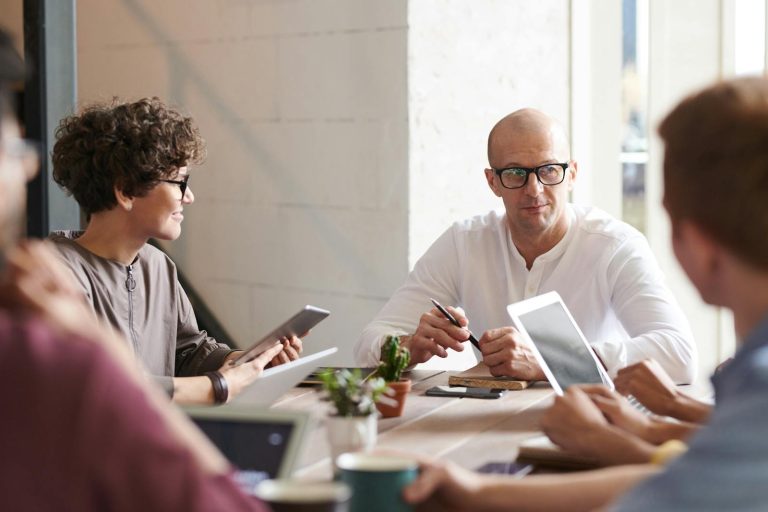When it comes to resolving conflicts, we often think of peer mediation as a structured process with specific steps. But did you know that not every step in peer mediation is standard? At Tampa Divorce Attorney, we have years of experience navigating the intricacies of legal disputes, and understanding these processes can be crucial. Join me as we delve into the steps of peer mediation and uncover which ones might not typically belong. You’ll find this unexpected insight both surprising and essential for effective conflict resolution.
As stated in university literature, a typical step in peer mediation does not include assigning blame to either party. Instead, the process focuses on listening, understanding, and finding a mutually agreeable solution.
Understanding Peer Mediation Basics
Peer mediation empowers students to become mediators, fostering essential conflict resolution skills among peers.
Typically, they are trained to listen and talk well to help find a solution that works for everyone. Mediators do not take sides. They make a safe and private space for those involved. The process usually involves setting rules for the session. Each person gets a chance to share their story and feelings. The mediators then help both sides understand each other and work towards a solution they both can accept. This might involve saying sorry, making compromises, or agreeing on future behavior. The goal is to promote understanding, respect, and peaceful solutions.
Essentially, peer mediation can be used for various problems like disagreements, misunderstandings, gossip, or bullying. It can also help improve skills like communication, empathy, and resolving conflicts. Training for peer mediators often includes role-playing, active listening, problem-solving, and keeping things confidential. Having peer mediators in schools can reduce violence, improve relationships, and create a positive and supportive community. It helps students take responsibility for their actions and contribute to a peaceful school environment.
Typical Steps in Peer Mediation
Peer mediation begins with the fascinating step where both conflicting parties must first agree to participate, setting a foundation for collaborative resolution.
To put it briefly, a neutral person called a mediator listens to both sides without picking favorites. The mediator helps everyone talk clearly and share their thoughts. By talking openly, both sides try to figure out what’s really causing the problem and come up with possible solutions. They suggest ideas and discuss until they find an answer that works for both.
Basically, the mediator helps keep the conversation on track and moving toward a solution. Once they agree on what to do, both sides promise to stick to the terms and calmly solve the conflict. The mediator needs to make sure everyone feels heard and respected during this process.
Uncommon Peer Mediation Steps
Following up on that point uncommon peer mediation steps can explore unique conflict resolution techniques beyond traditional methods.
In essence, to help people communicate better and understand each other during conflicts, try using fun activities or exercises. You can also come up with new ideas to solve the main problems causing the conflict.
Encourage both sides to listen carefully and show empathy, as this can lead to better understanding and a smoother mediation process. Setting up support systems like peer counseling or mentoring after the mediation can also help avoid future issues.
Using restorative justice in mediation means focusing on fixing the harm and repairing relationships instead of blaming or punishing. It seems that this approach can help everyone involved feel accountable and start healing.
Also, consider using technology, like online mediation platforms or virtual reality, to help people communicate and resolve conflicts. These tools can create a safe and neutral space for open discussions and finding agreements.
Common Pitfalls in Peer Mediation

Based on our findings, a frequent pitfall in peer mediation is mediators failing to remain neutral, displaying bias towards one party.
Largely this can make people feel things are unfair and mess up the mediation process.
Another issue is when mediators aren’t properly trained and don’t have the right skills to help the two sides talk. This can cause misunderstandings and make it hard to find a solution.
Also, if there’s no confidentiality, people might not feel safe to share their true thoughts and feelings. You know, they may worry that what they say will be shared with others, breaking the trust between everyone involved.
Lastly, not following up after mediation can also be a problem. Without ongoing support, the agreement made during mediation might not last. Peer mediators need to deal with these problems to make the mediation fair, effective, and supportive for everyone involved.
Improving Peer Mediation Practices
As was previously noted regular training, open communication, clear guidelines, and a collaborative approach can significantly enhance the effectiveness of peer mediation.
Let me explain, creating a good and respectful atmosphere for mediation sessions is important. All parties should feel listened to and understood. Mediators need to be fair and unbiased, aiming to help everyone have useful talks and find solutions that work for them.
In concise terms, regular reviews and feedback can point out what needs improving to keep peer mediation effective. These steps can help students learn how to handle conflicts better, build positive relationships, and make the school community more peaceful.
Summary
Continuing from before, in conclusion, identifying the root cause of the conflict and brainstorming possible solutions with the parties involved are two essential steps in peer mediation.
What Tampa Divorce Attorney is seeing the good in is, however, involving teachers or other authority figures in the mediation process is not a typical step. Peer mediation emphasizes empowering students to resolve conflicts independently and constructively.
Related Articles
- Second Divorce: What It Feels Like and Things to Expect
- Divorce Terms: Common Terms Used in Family Court
- How to Secretly Prepare for Divorce: Quiet Steps to Protect Yourself and Your Future
- Divorce: Parents Arguing, How Conflict Affects Children
- Rebuilding Your Life After Divorce: How to Feel Good and Find Joy







